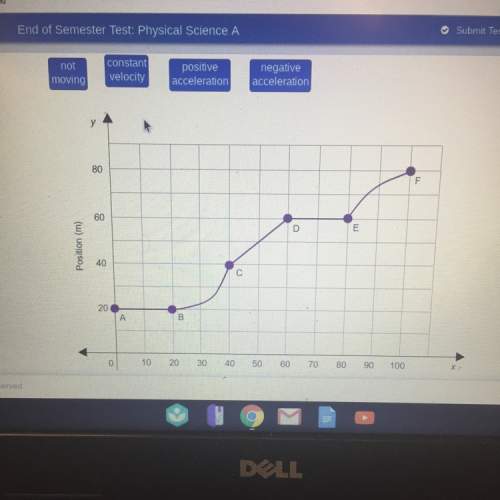
Physics, 17.07.2020 20:01 lukeakalucas
A piano tuner hears a beat every 2.20 s when listening to a 266.0 Hz tuning fork and a single piano string. What are the two possible frequencies (in Hz) of the string? (Give your answers to at least one decimal place.)

Answers: 1


Other questions on the subject: Physics

Physics, 22.06.2019 00:10, oktacos
The energy released by a chemical reaction can be measured using a calorimeter. when barium hydroxide octahydrate crystals are reacted with dry ammonium chloride inside of a coffee cup calorimeter, the temperature of the 18.00 g of water in the calorimeter decreases from 30.0°c to 8.0°c. the equation for calculating energy absorbed or released by a reaction is: where q is the energy released or absorbed, m is the mass of water in the calorimeter, cp is the specific heat of water, and δt is the observed temperature change. if the specific heat of liquid water is 4.19 j/g·°c, how much energy was absorbed by the reaction?
Answers: 3

Physics, 22.06.2019 12:50, natalyarenassalgado
Arunner is jogging at a steady 3.6 km/hr. when the runner is 2.9 km from the finish line, a bird begins flying from the runner to the finish line at 14.4 km/hr (4 times as fast as the runner). when the bird reaches the finish line, it turns around and flies back to the runner. even though the bird is a dodo, we will assume that it occupies only one point in space, i. e., a zero-length bird. how far does the bird travel? (b) after this first encounter, the bird then turns around and flies from the runner back to the finish line, turns around again and flies back to the runner. the bird repeats the back and forth trips until the runner reaches the finish line. how far does the bird travel from the beginning? (i. e. include the distance traveled to the first encounter)
Answers: 2

Physics, 22.06.2019 17:00, griffinkiley22
Two manned satellites approaching one another at a relative speed of 0.550 m/s intend to dock. the first has a mass of 2.50 ✕ 103 kg, and the second a mass of 7.50 ✕ 103 kg. assume that the positive direction is directed from the second satellite towards the first satellite. (a) calculate the final velocity after docking, in the frame of reference in which the first satellite was originally at rest.(b) what is the loss of kinetic energy in this inelastic collision? (c) repeat both parts, in the frame of reference in which the second satellite was originally at rest. final velocity(d) loss of kinetic energy = ?
Answers: 2

Physics, 22.06.2019 18:00, mariaaaaa69
Astudent pushes a 60-n block across the floor for a distance of 10 m. how much work was done to move the block
Answers: 1
You know the right answer?
A piano tuner hears a beat every 2.20 s when listening to a 266.0 Hz tuning fork and a single piano...
Questions in other subjects:

Mathematics, 12.06.2021 23:20

Mathematics, 12.06.2021 23:20

Physics, 12.06.2021 23:20

Business, 12.06.2021 23:20


Biology, 12.06.2021 23:20



















